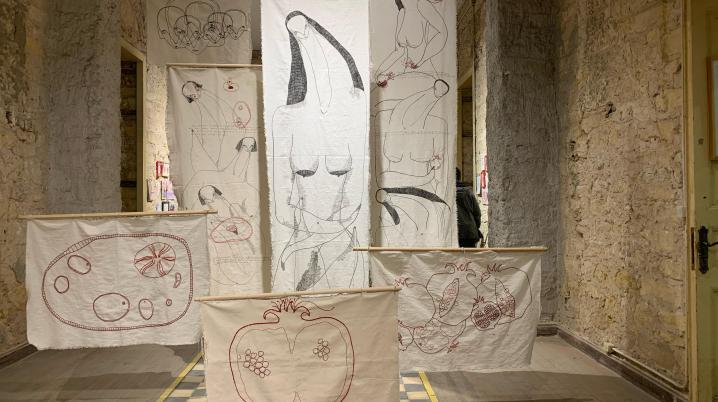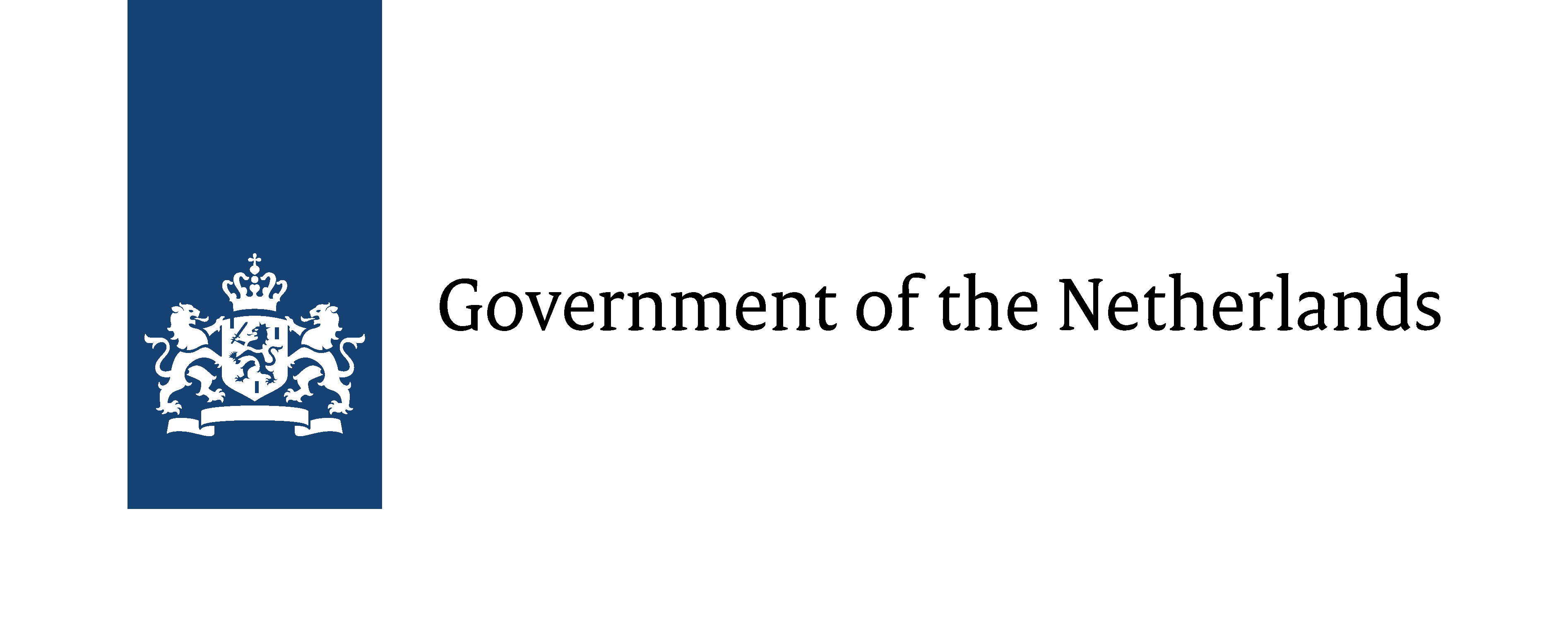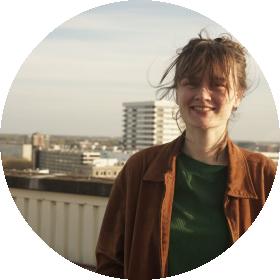
In December 2024, DutchCulture's advisor for Egypt and South Africa, Minke van Schaik, travelled to Cairo to explore the alternative art scene there. Artists in Egypt must contend with censorship, dependency on financial grants from abroad, and art market demand. What motivates the people behind these initiatives, and how are they able to persist under pressure?
In Cairo, I was struck by a kind of nostalgia for the recent past of the alternative art scene. The city enjoyed a rich landscape of cultural venues in the past twenty years, but they can be difficult to track down and some have now disappeared. This happens to small independent venues all over the world, but in Cairo this took place in an increasingly repressive political climate. There was a brief resurgence at the start of the previous decade, in the short period between the Arab Spring protests and the takeover of the current government. Carried on the wings of the newly-won freedom, many cultural and community initiatives blossomed in Cairo during that time.
Contemporary Image Collective
I visit a number of still active organisations and am impressed by how they manage to keep their head above water, with limited resources in a difficult cultural climate. Artist Amado Alfadni recounts how he used to organise art film screenings on the terrace of a café and how his own artistic practice was influenced by this cultural moment, particularly by a workshop about working with archival images offered by the Contemporary Image Collective (CIC). Although it lost its location in downtown Cairo, CIC managed to secure a new space in the Garden City district. I am offered a tour of the library, and am shown several publications relating to previous projects such as The Light of Distant Stars - On Cairo and Pan-Africanism. In a library packed with art-theoretical publications, this book documents a programme of reading groups and workshops on the history of Cairo as a place where pan-African liberation movements converged. In addition to the library, CIC offers a workshop space and various types of printing facilities with which to experiment.
CIC is still and mainly a centre where image makers engage in theoretical development and debate. As such, the centre has proven vital to going from a more traditional art practice to one that operates in dialogue with the international art world. I meet a staff that is determined to breathe new life into this role in its new location, despite the persistent pressure.
Cairo Art Book Fair
While making my way around the alternative art scene in Cairo, I hear many people talk about the need for a platform for debate and theoretical development. This desire is also reflected in the contemporary success of the Cairo Art Book Fair. At the launch of What Shapes our Pages, a publication about independent publishing, founders Nour El Safoury and Marwa Benhalim explain that the Cairo book fair was created as a platform for knowledge exchange and now draws dozens of publishers to Cairo. In an earlier interview they described that while censorship has a significant impact on cultural production, printed books are not censored prior to publication but only afterwards, at which point they might be prohibited.1 This gives the cultural scene a bit of room, which is gratefully utilised.
Cairo Urban Initiatives Platform
Following the resurgence of cultural initiatives during the revolution, Cairo Urban Initiatives Platform (CUIP) was established in 2013 by CLUSTER - Cairo Lab for Urban Studies, Training and Environmental Research. CUIP’s goal is to provide an overview of cultural life in terms of art, culture, architecture, advocacy, urban development and interdisciplinary projects. At present it functions, perhaps unintentionally, as an archive. Omar Nagati receives me in a room full of cultural and historical publications, where a ten-strong team is busily working on a wide range of commissioned and self-initiated projects. Nagati tells me that the books have been catalogued and are publicly accessible through the CURL Library, which is a platform they have developed jointly with other organisations. He sums up an impressive list of projects that all demonstrate the same approach: working on metropolitan issues and sharing resources and knowledge with the communities that inform their practice.
As we drive off in his car after a visit to their Maker Space in the informal neighbourhood of Ard El Liwa, Nagati admits that this might also be their pitfall: as interdisciplinary thinkers, artists and designers, it is up to them to engage with certain social and cultural issues and to come up with creative solutions. But it is difficult to work on durable solutions while there is a lack of cultural infrastructure. They are moreover not a public institution: not a library, nor a museum or gallery. They are compelled to take on that role, albeit on a small scale. In the meantime, CLUSTER engages with lots of other urban and societal issues, giving CUIP an update each time a financier takes an interest.
Art d’Egypte
At most of the initiatives I visit there is no mentioning of public funding. One organisation that does work more closely with the Egyptian government is Art d’Egypte, which organises international art manifestations, in which the Dutch designer Sabine Marcelis participated in 2023. Art d’Egypte organises these exhibitions through public-private partnerships at heritage locations. These types of exhibitions tend to feature formal responses to for instance the pyramids of Giza, rather than engaging in a critical dialogue with the reality of the city. Manifestations, festivals and residencies are sometimes supported by private financiers, banks and local businesses, mainly tied to the real estate sector, who have a commercial interest in the regeneration of urban landscapes. But the pot of money is limited, and the competition is fierce.
Smaller organisations can expect more from the local branches of foreign cultural centres such as the Goethe Institut, Institut Français and the British Council. While these institutions are mainly known in the Netherlands for their language courses, in the global south they generally play a significant role in supporting local art and culture. They sometimes offer a cultural performance stage and offer financial support in the form of project grants, residency programmes and festivals.
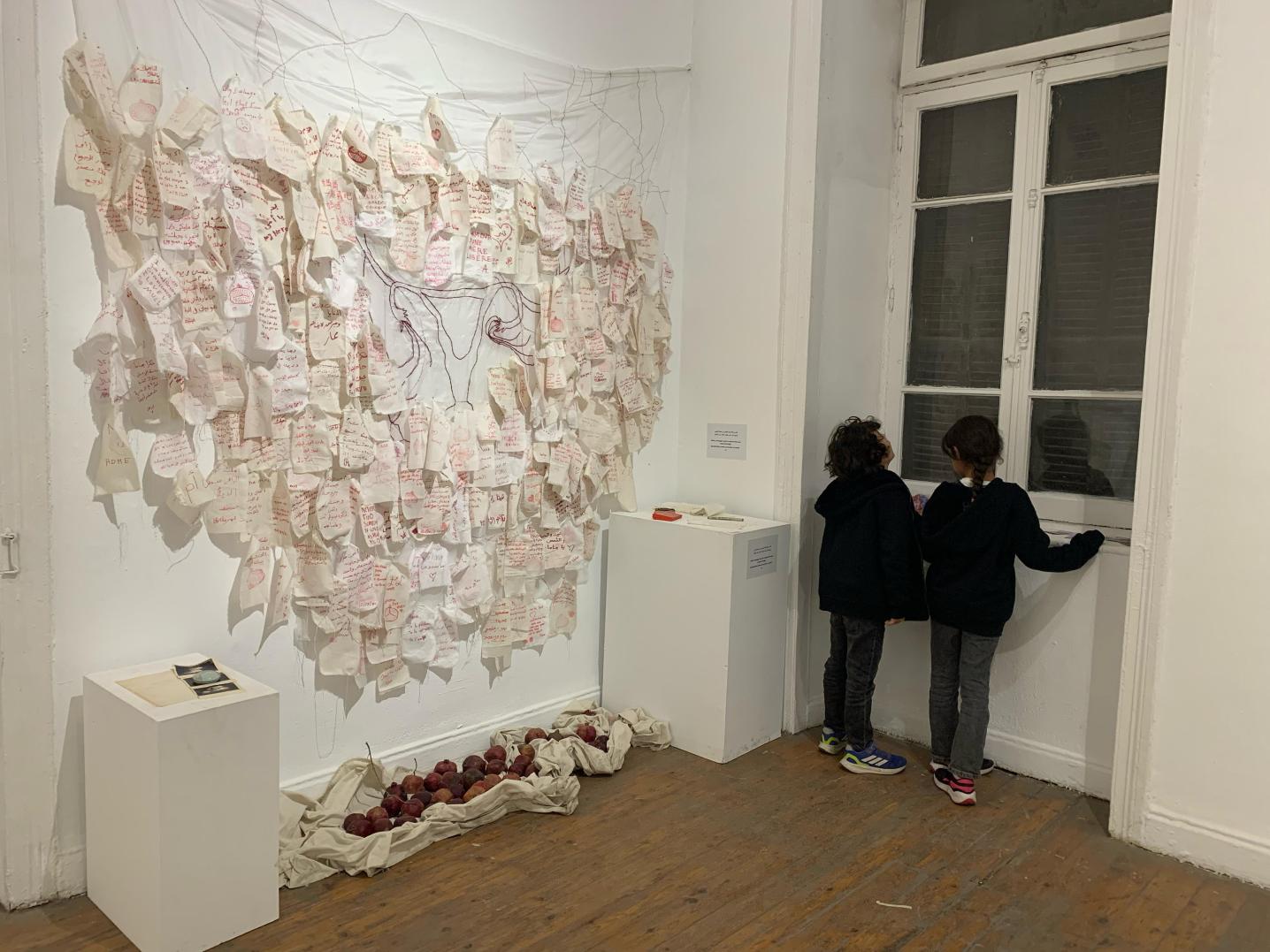
Access Gallery
Much of the art on offer is found in galleries that subsist on sales. One such gallery, the Access Gallery, is housed at a remarkable location: on the first floor of the building that previously housed the Townhouse Gallery. After a series of conflicts with the authorities, the internationally renowned Townhouse was forced to close down, but part of the complex managed to make a new start. The photographers’ collective Safena 7 and artist Fatma Abo Doma also have their studios in the same building as Access, while the surrounding buildings are increasingly taken up by trendy design and gift shops.
Doma guides me around her duo exhibition on motherhood. She describes how her work is entwined with her own life, and how the various generations of her mother’s side of the family feature in the works on show. In a previous work she took as starting point the road that leads from her home to her studio in Downtown Cairo. She and her husband joke that they never really make it beyond Downtown, so that their entire life takes place in that chaotic, extreme combination of colonial architecture, Arab neon advertisements, and many decades of air pollution.
ARD - Art Institution
Another organisation that now fills the gap left by the former Townhouse is ARD - Art Institution, a residency and exhibition space in the Garden City neighbourhood. I meet founder Hana El Beblawy, who tells me how the residency, which can host three artists at a time, often culminates in exhibitions and public programmes. ARD was founded in 2022 as an alternative to commercial art production, El Beblawy explains. ARD ideally hosts one artist from the global south, one from Egypt (outside Cairo or Alexandria), and one from the rest of the world. The programming reveals a lot of attention for the making process, as one may expect of a residency where it’s all about the encounters between artists from Cairo and from elsewhere. The bar is set high, as is the pace of production.
The pace of production seems to fit the rhythm of the city; but the exhibition of Georgina Sleap at ARD forms a striking contrast. The highlight of the exhibition of this British artist, resident of Cairo since five years, is a textile sculpture consisting of a self-constructed weaving loom and the three-dimensional carpet it produces. Using a climbing harness, Sleap attached the loom to her body, to then produce the spatial sculpture through a vast number of knots and other operations. The work is suspended dynamically in the space, and an accompanying video shows the making process as well as the context, which is the historical neighbourhood of Faggala.
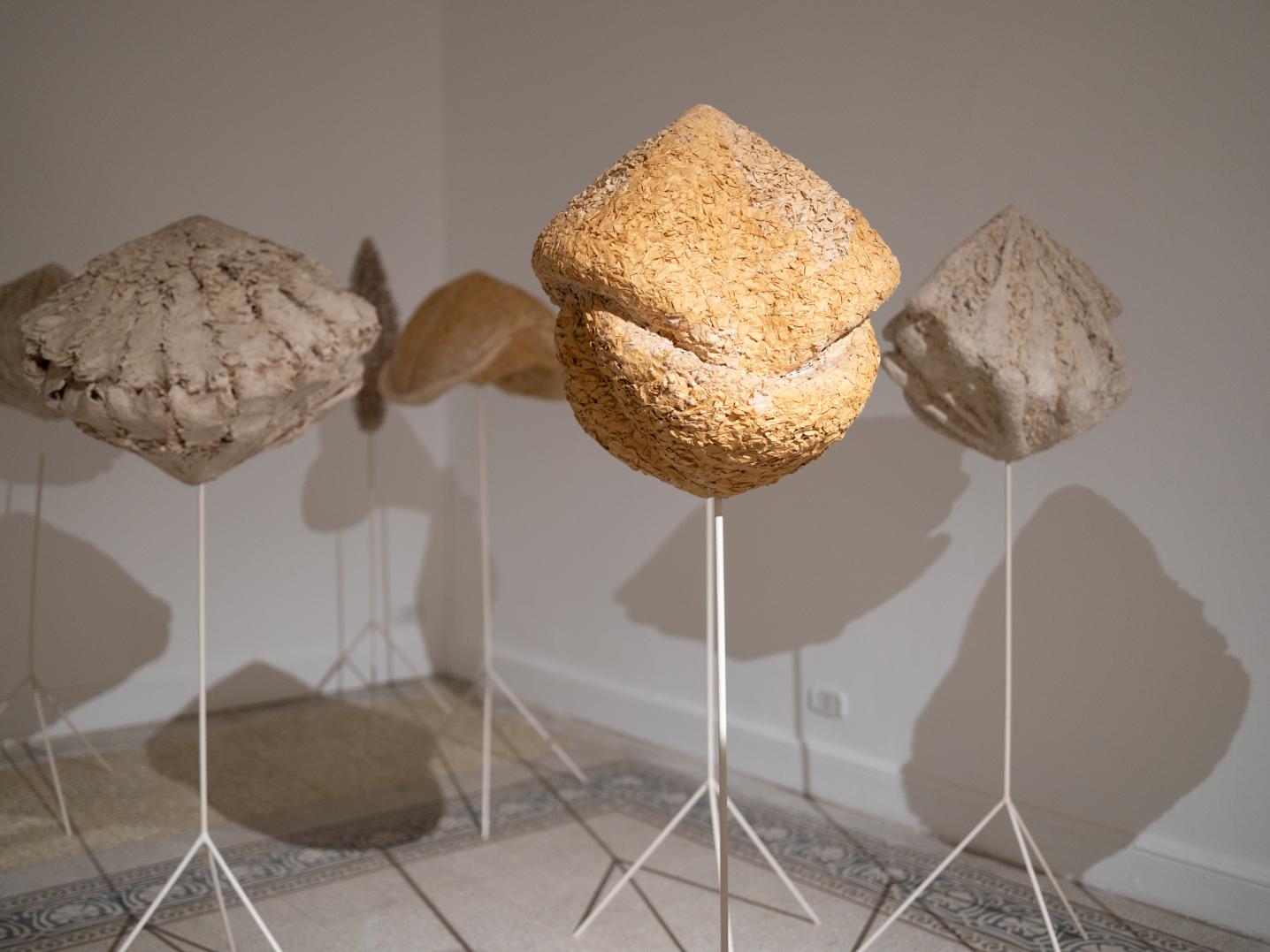
Cimatheque
Political subjects are officially not a topic of conversation, at least not publicly, so also not at an exhibition. Before an exhibition can open or a film can be taken into production, it must first gain the approval of a censorship committee. As an outsider of course, I can’t be aware of the projects that are prohibited, or of the self-censorship that makers might apply. But in a situation where people cannot talk about the present, you do notice an increasing interest in working with archives. I talk to Tamer el Said, filmmaker and founder and artistic director of Cimatheque, the alternative analogue film centre in the Downtown district. Cimatheque concentrates on the restoration and conservation of films and documents related to their production. He shows me around the space above Cimatheque, which they are currently renovating. A library and reading room are due to open here sometime in 2025, and their archive and film collection will also be made accessible to the public.
I get the feeling that initiatives prefer to not become too successful, to avoid drawing the critical attention of the authorities. They must constantly seek to balance success with the safety of remaining in the margin. Also, the number of artists and curators that have (partly) moved abroad is striking, where they can operate in closer contact with the international art scene and beyond the grasp of the censorship committee. People also do return, however. They produce work abroad but then spend a few months a year in Egypt, where they actively participate in cultural life. This brain drain therefore seems temporary, and a critical art scene continues to develop, albeit just discursively or on platforms outside Egypt.
Minke van Schaik is DutchCulture’s advisor for Egypt and South Africa. Feel free to contact her for further information about cultural collaboration with one of these countries.
More information about the various art initiatives in Cairo is available at https://www.cuipcairo.org/. An earlier version of this article was published in Metropolis M, edition 3, 2025.
- See Nour El Safoury’s interview with Alaa Elbannan: https://rowayat.org/a-new-heartbeat-in-cairos-art-scene/
